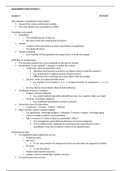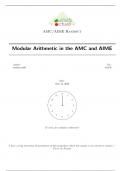College aantekeningen
Quantitative Data Analysis 1 (QDA1) Lecture Notes - GRADE 9,0
- Instelling
- Universiteit Van Amsterdam (UvA)
Quantitative Data Analysis 1 lecture notes from 13 lectures, including SPSS tips. The summary is 31 pages and includes notes from all lectures given in the course 6011P0218Y at UvA.
[Meer zien]






